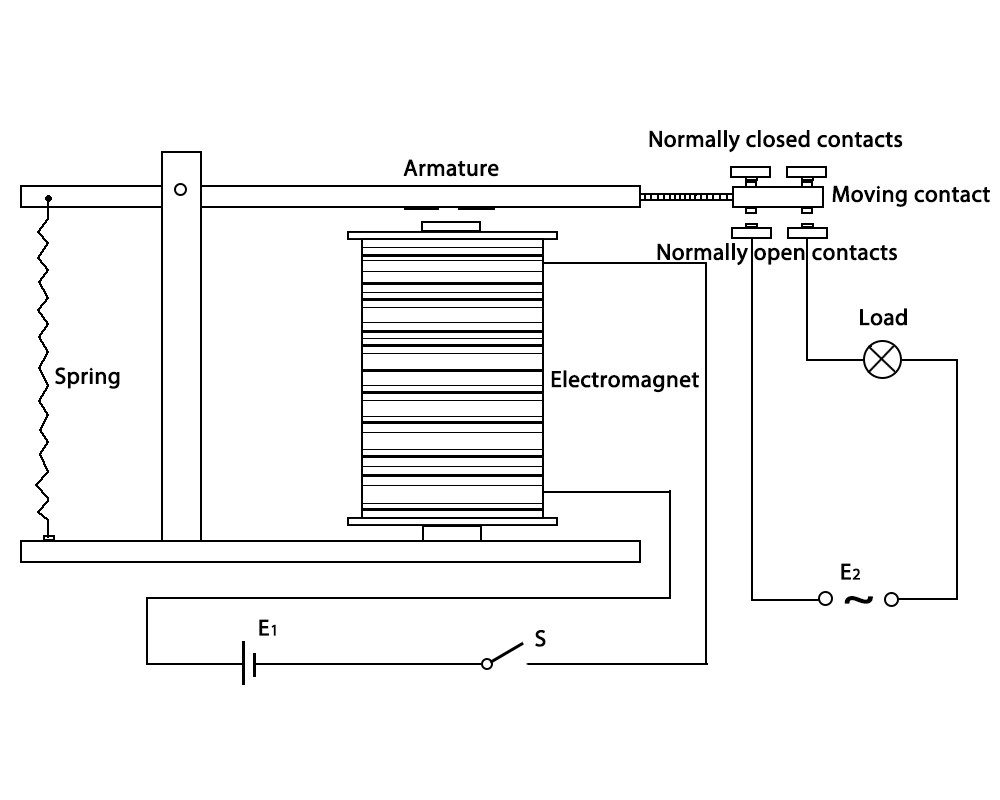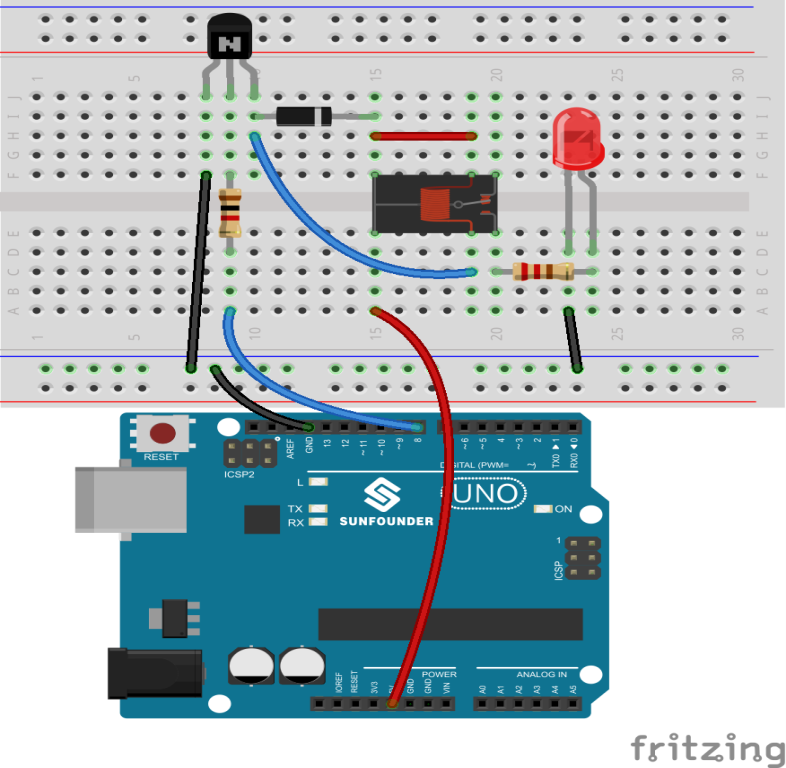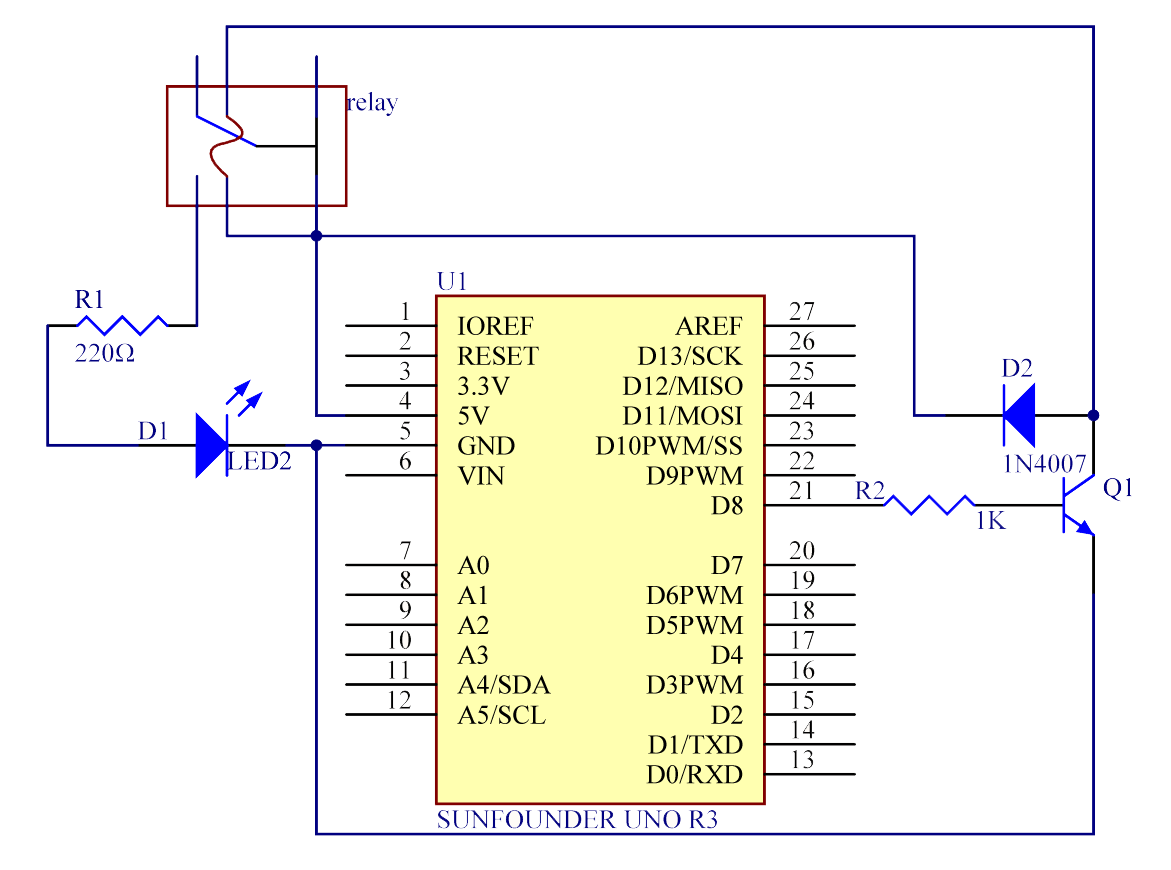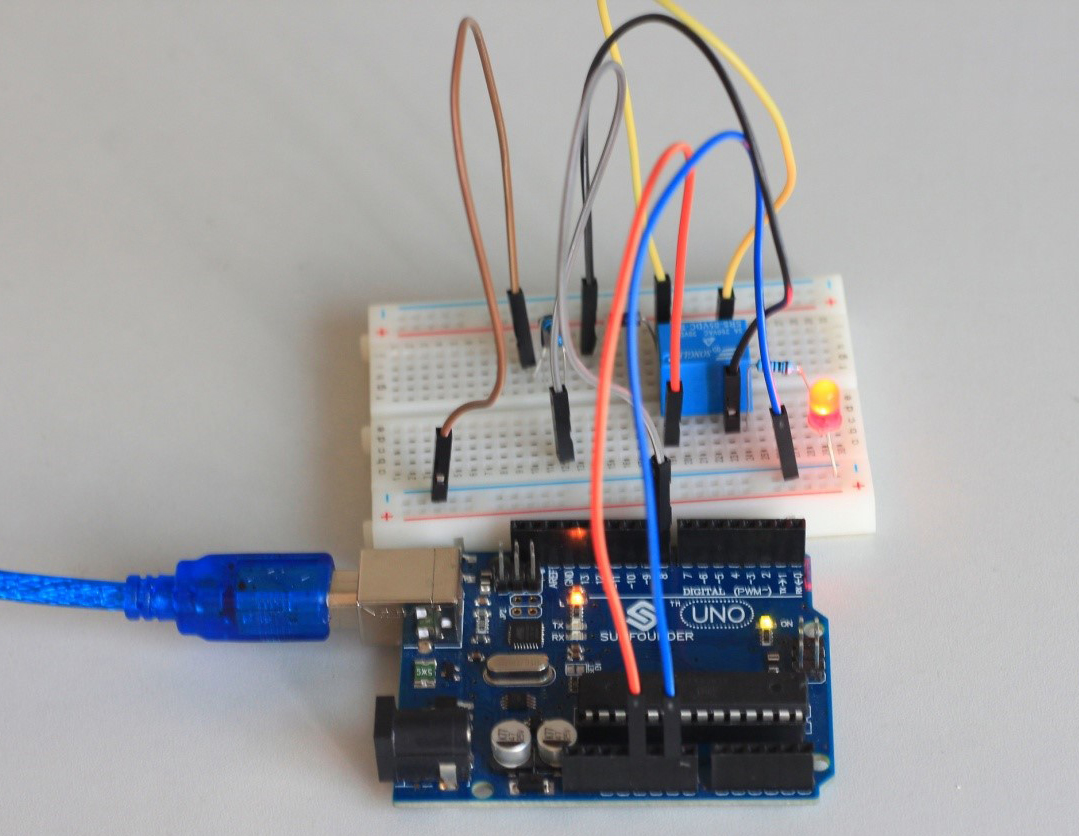Introduction
As we know relay is a device which is used to provide connection between two or more points or device in response to the input signal applied. In another words relay provide isolation between the controller and the device as we know devices may work on AC as well as on DC. However, they receive signals from microcontroller which works on DC hence we require a relay to bridge the gap. Relay is extremely useful when you need to control a large amount of current or voltage with small electrical signal.
Components
– 1 * SunFounder Uno board
– 1 * USB data cable
– 1 * Relay
– 1 * LED
– 1 * Resistor (220Ω)
– 1 * Resistor (1KΩ)
– 1 * NPN Transistor
– 1 * Diode (Rectifier)
– Several jumper wires
– 1 * Breadboard
Experimental Principle
Relay – There are 5 parts in every relay:
1. Electromagnet – It consists of an iron core wounded by coil of wires. When electricity is passed through, it becomes magnetic. Therefore, it is called electromagnet.
2. Armature – The movable magnetic strip is known as armature. When current flows through them, the coil is it energized thus producing a magnetic field which is used to make or break the normally open (N/O) or normally close (N/C) points. And the armature can be moved with direct current (DC) as well as alternating current (AC).
3. Spring – When no currents flow through the coil on the electromagnet, the spring pulls the armature away so the circuit cannot be completed.
4. Set of electrical contacts – There are two contact points:
. Normally open – connected when the relay is activated, and disconnected when it is inactive.
. Normally close – not connected when the relay is activated, and connected when it is inactive.
5. Molded frame – Relays are covered with plastic for protection.
Working of Relay
The working principle of relay is simple. When power is supplied to the relay, currents start flowing through the control coil; as a result, the electromagnet starts energizing. Then the armature is attracted to the coil, pulling down the moving contact together thus connecting with the normally open contacts. So the circuit with the load is energized. Then breaking the circuit would a similar case, as the moving contact will be pulled up to the normally closed contacts under the force of the spring. In this way, the switching on and off of the relay can control the state of a load circuit.

In this experiment, when the relay closes, the LED will light up; when the relay opens, the LED will go out.
Experimental Procedures
Step 1: Build the circuit

The schematic diagram

Step 2: Program (Please refer to the example code in LEARN -> Get Tutorials on our website)
Step 3: Compile the code
Step 4: Upload the sketch to the SunFounder Uno board
Now, if a high voltage is supplied, the relay will close and the LED will light up; if a low voltage is supplied, the relay will open and the LED will go out. In addition, you can hear ticktock caused by breaking normally close contact and closing normally open contact.

Code
| //relay //Email:support@sunfounder.com //Website:www.sunfounder.com/******************************************************/ const int relayPin = 8; //the base of the transistor attach to /******************************************************/ void setup() { pinMode(relayPin, OUTPUT); //initialize the relayPin as an output } /******************************************************/ void loop() { digitalWrite(relayPin, HIGH); //drive relay closure conduction delay(1000); //wait for a second digitalWrite(relayPin, LOW); //drive the relay is closed off delay(1000); //wait for a second } /******************************************************/ |
Video
